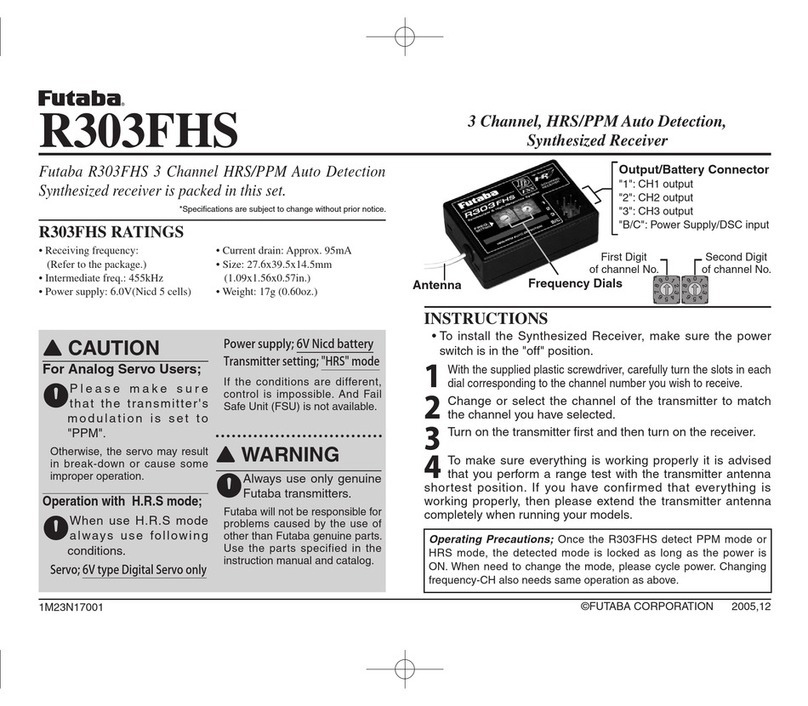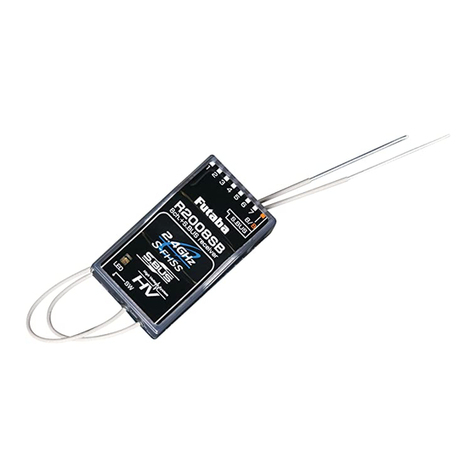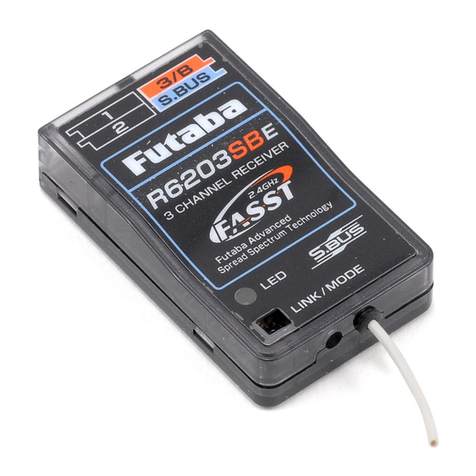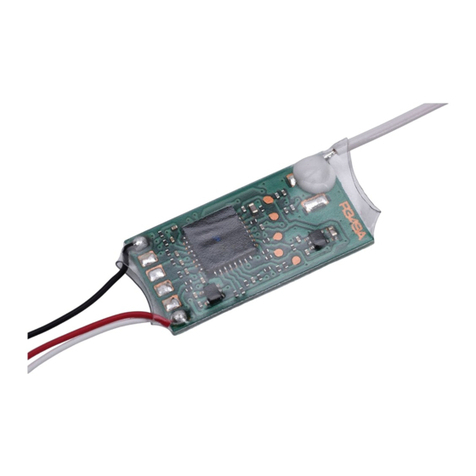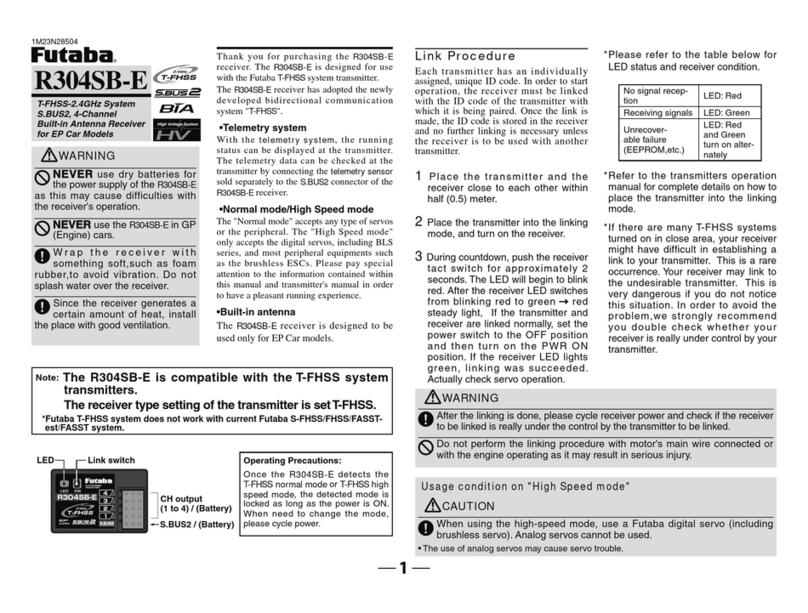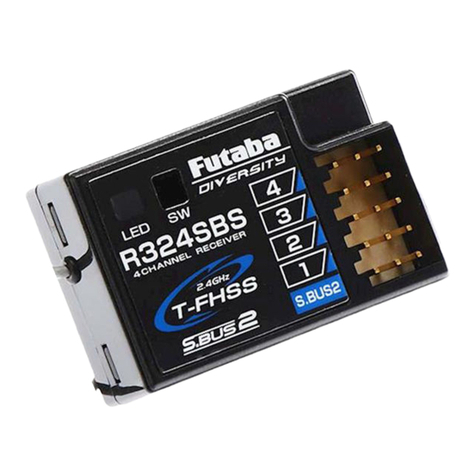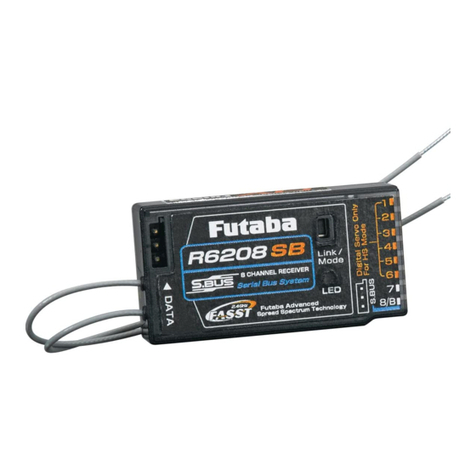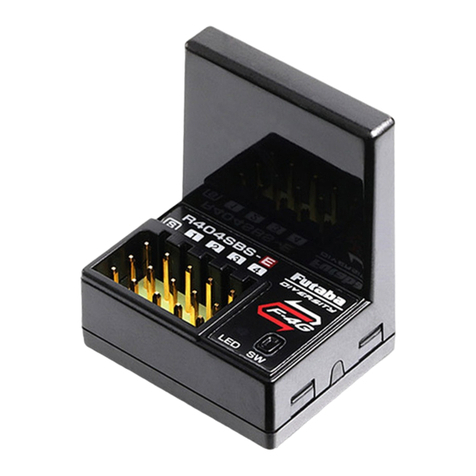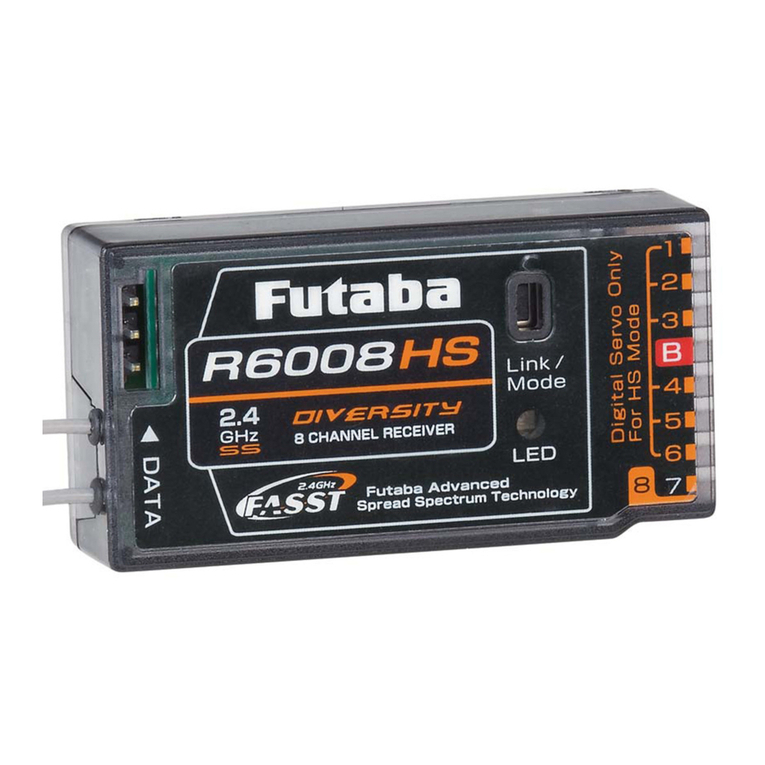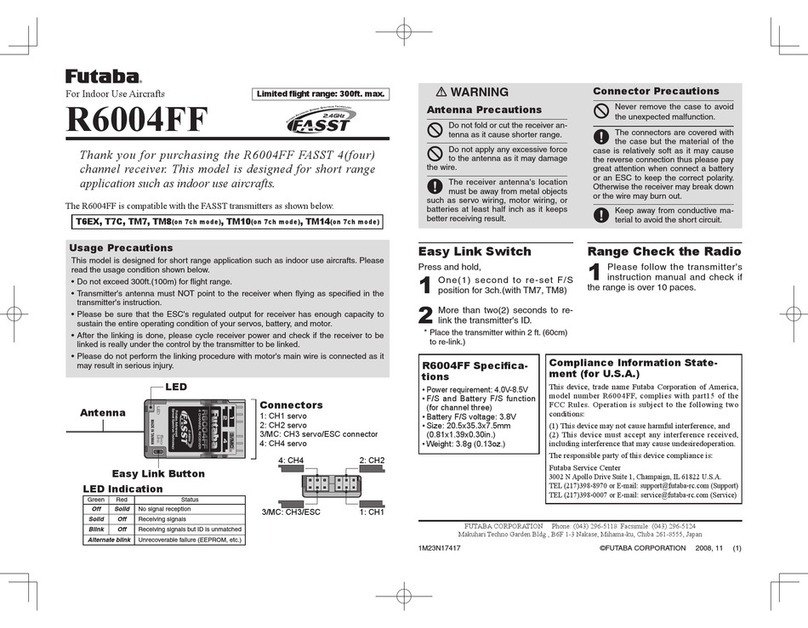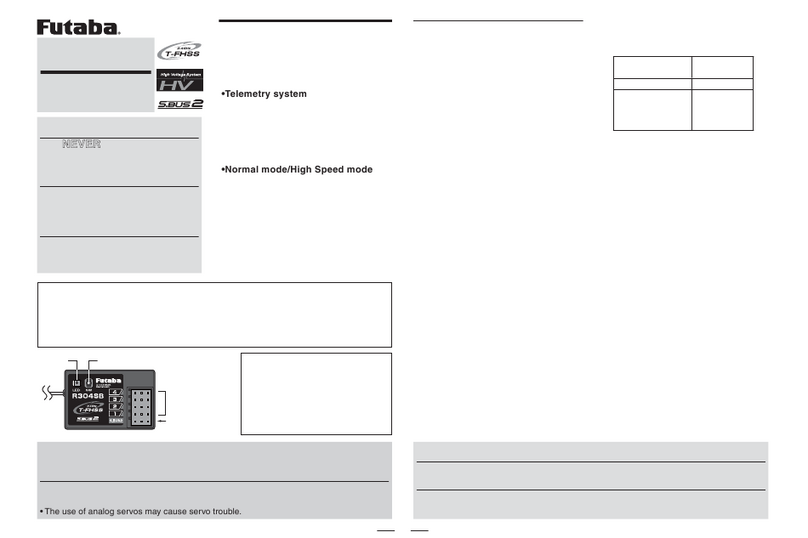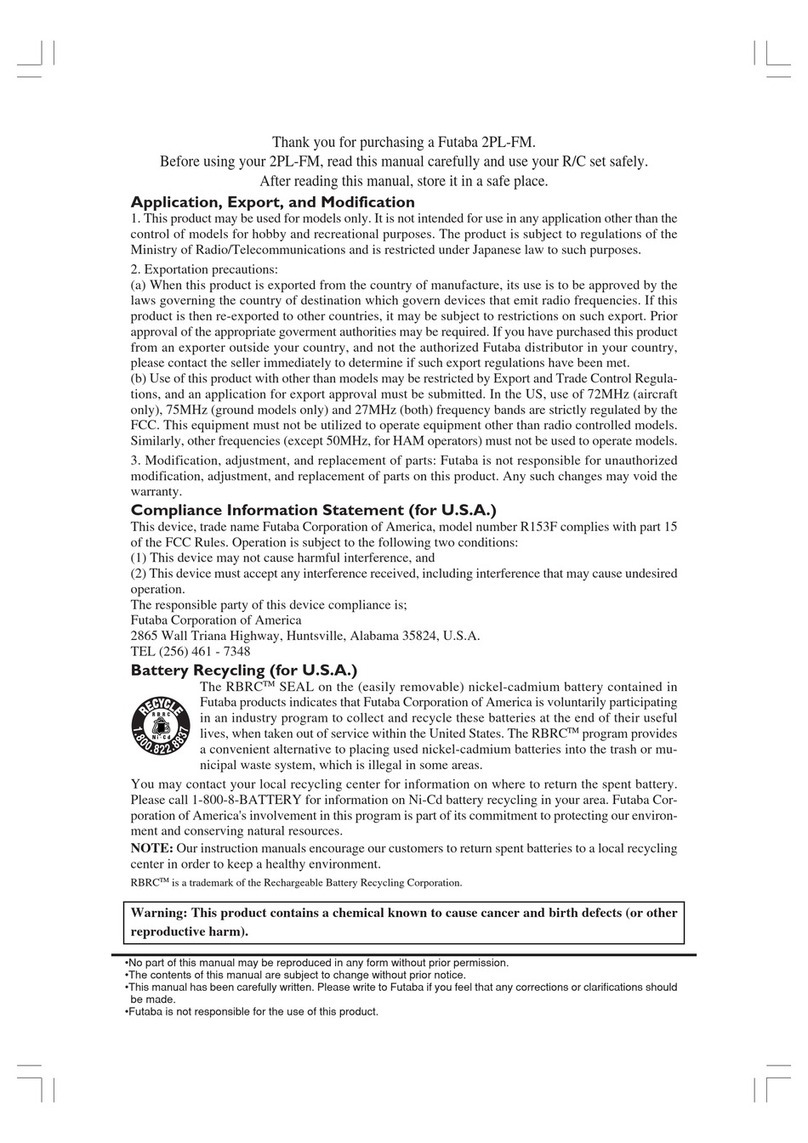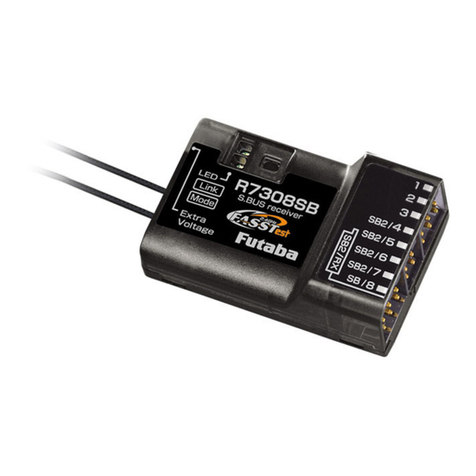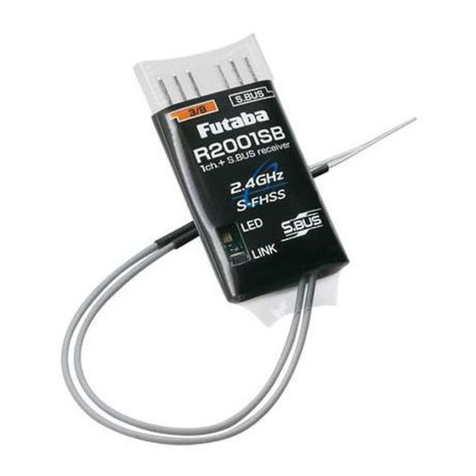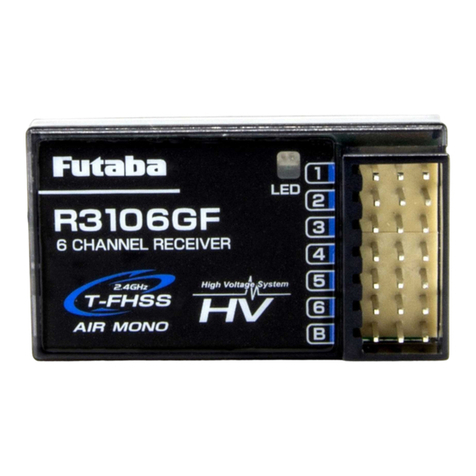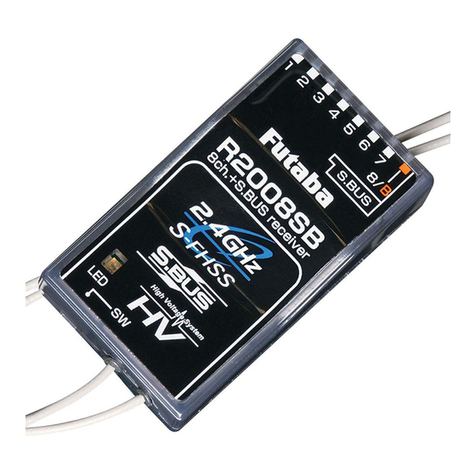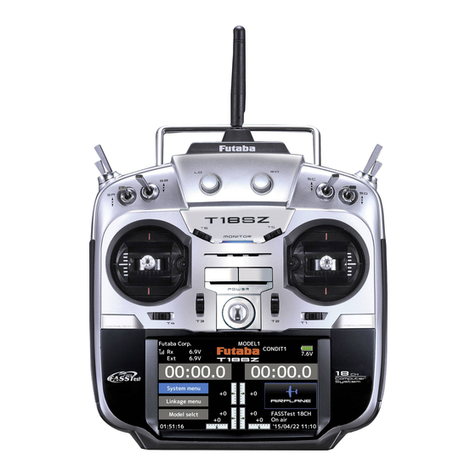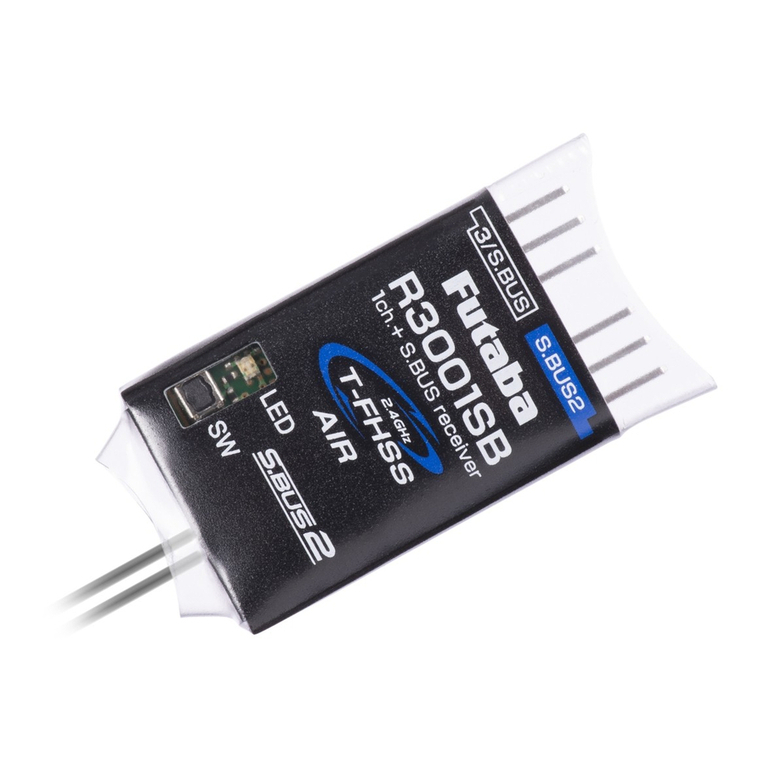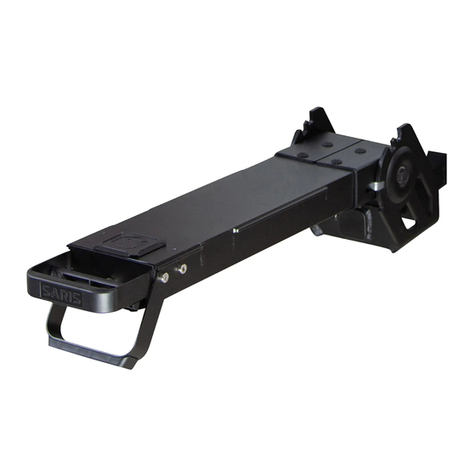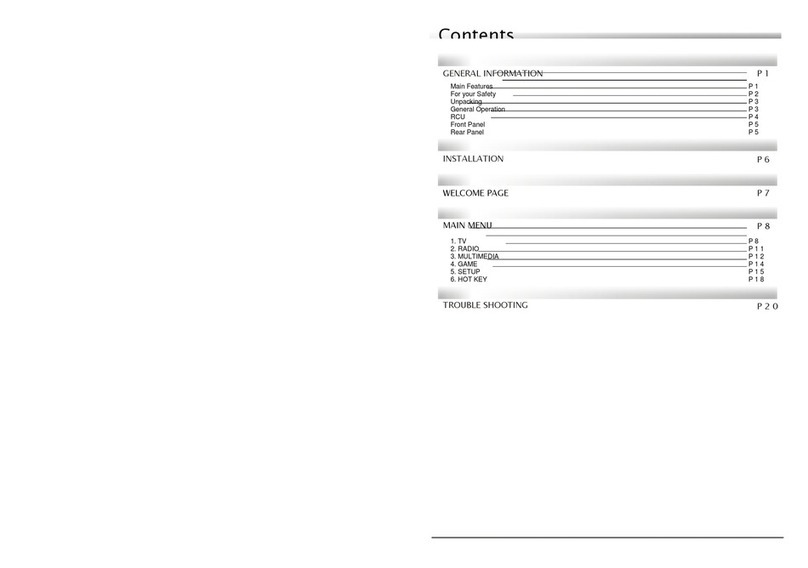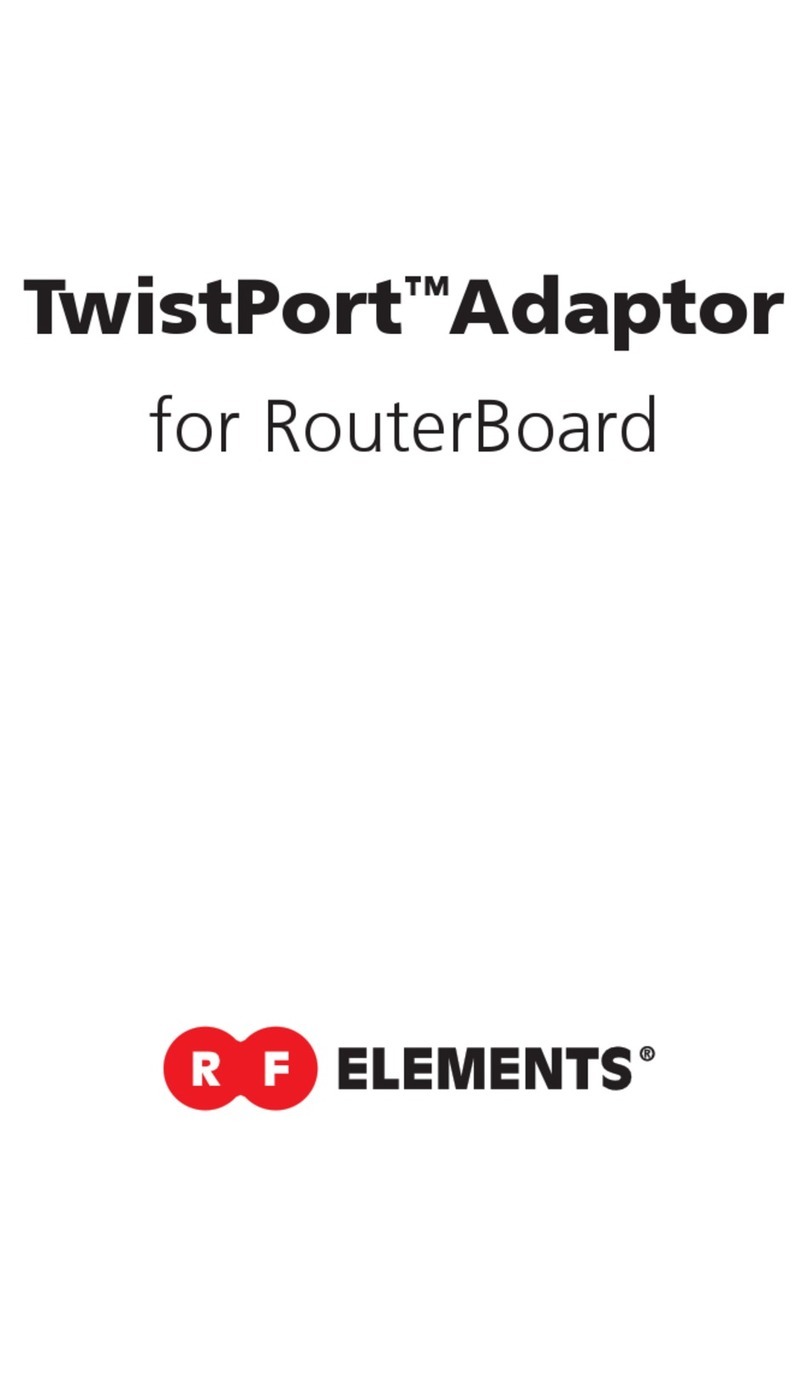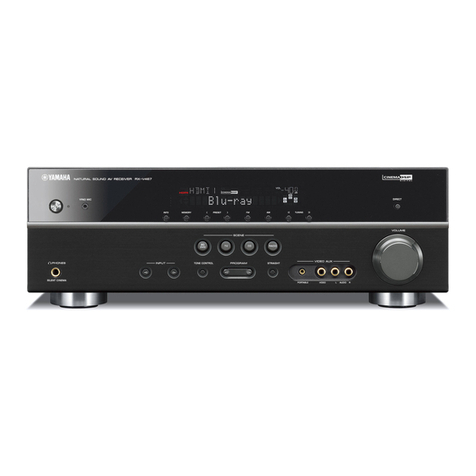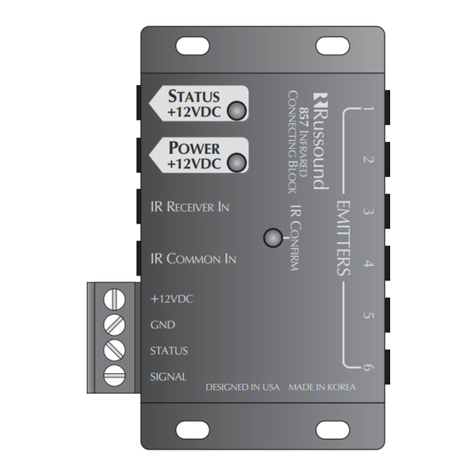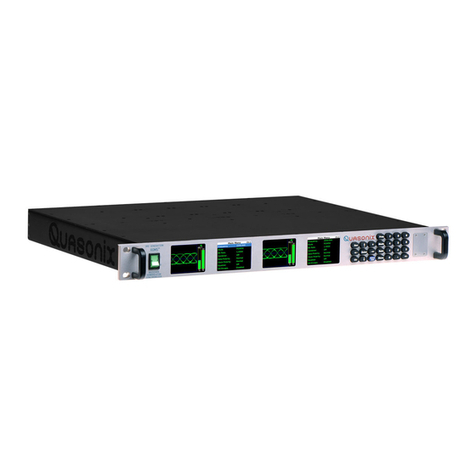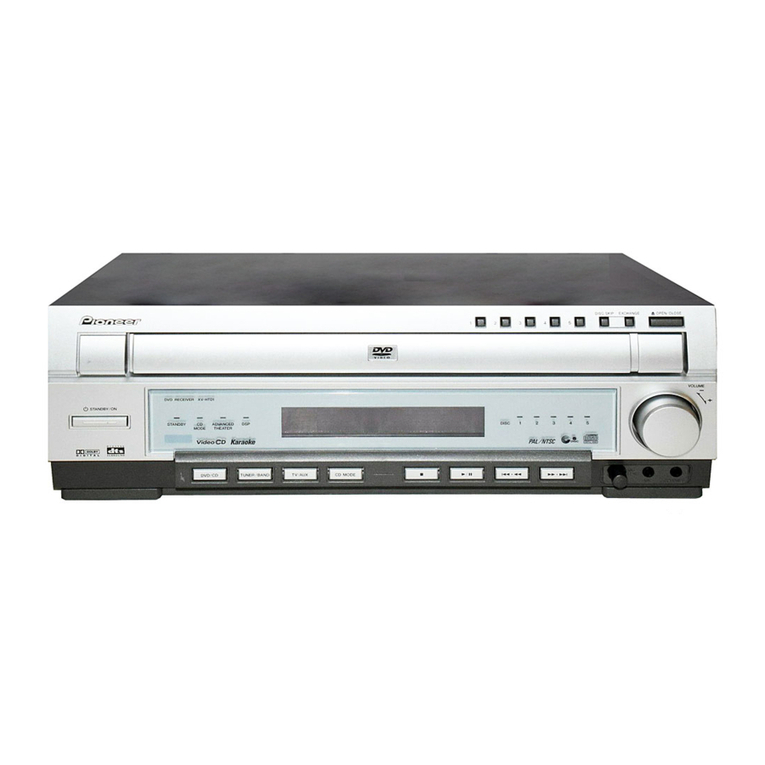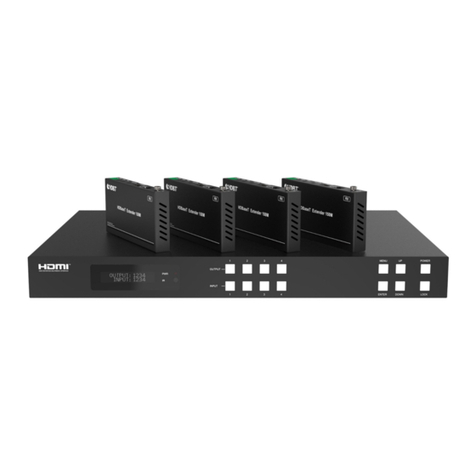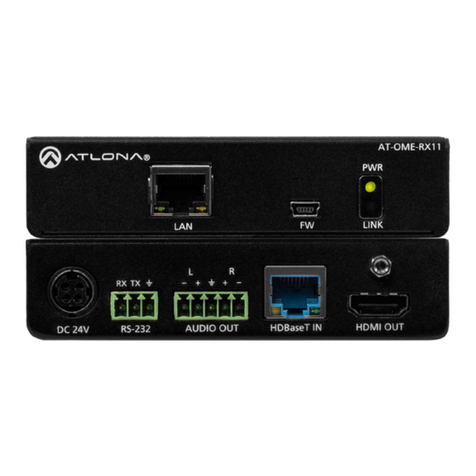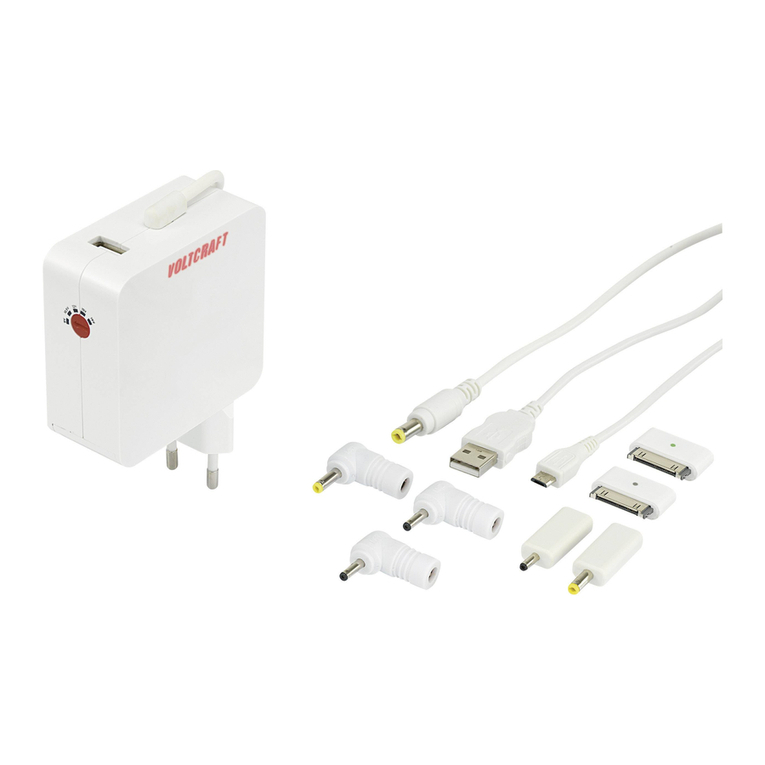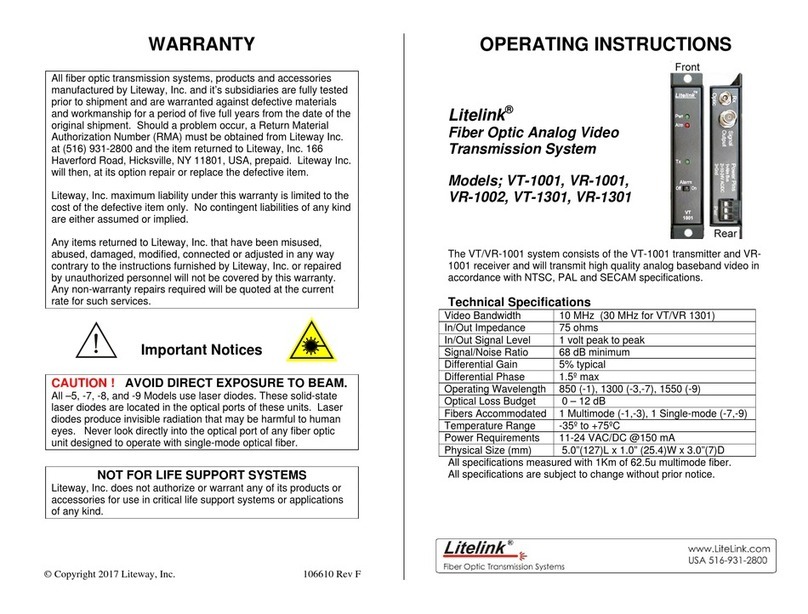Thank you for purchasing a Futaba SKYSPORT 6. Before using your SKYSPORT 6, read this
manual carefully and use your R/C set safely. After reading this manual, store it in a safe place.
See the glossary page 22 for a definition of the special terms used in this manual.
APPLICATION, EXPORT, AND RECONSTRUCTION
1. This product may be used for model airplane or surface use if on the correct frequency.
The product described in this manual is subject to regulations of the Ministry of Radio/Telecommu-
nications and is restricted under Japanese law to such purposes.
2. Exportation precautions
(a) When this product is exported from Japan, its use is to be approved by the Radio Law of the
country of destination.
(b) Use of this product with other than models may be restricted by Export and Trade Control
Regulations. An application for export approval must be submitted.
3. Modification, adjustment, and replacement of parts
Futaba is not responsible for unauthorized modification, adjustment, and replacement of parts of this
product.
THE FOLLOWING STATEMENT APPLIES TO THE RECEIVER (FOR U.S.A.)
This device complies with part 15 of the FCC rules. Operation is subject to the following two
conditions:
(1) This device may not cause harmful interference, and
(2) This device must accept any interference received, including interference that may cause
undesired operation.
THE RBRCTM SEAL (FOR U.S.A.)
The RBRCTM SEAL on the (easily removable) nickel-cadmium battery contained in Futaba products
indicates that Futaba Corporation of America is voluntarily participating in an industry program to
collect and recycle these batteries at the end of their useful lives, when taken out of service within
the United States. The RBRCTM program provides a convenient alternative to placing used nickel-
cadmium batteries into the trash or municipal waste which is illegal in some areas.
Futaba Corporation of America's payments to RBRCTM makes it easy for you to return the spent
battery to Futaba for recycling purposes. You may also contact your local recycling center for
information on where to return the spent battery. Please call 1-800-8-BATTERY for information on
Ni-Cd battery recycling in your area. Futaba Corporation of America's involvement in this program
is part of its commitment to protecting our environment and conserving natural resources.
NOTE: Our instruction manuals need to encourage our customers to return spent
batteries to Futaba or a local recycling center in order to keep a healthy environment.
RBRCTM is a trademark of the Rechargeable Battery Recycling Corporation.
•No part of this manual may be reproduced in any form without prior permission.
•The contents of this manual are subject to change without prior notice.
•This manual has been carefully written. Please write to Futaba if you feel that any corrections or clarifications
should be made.
•Futaba is not responsible for the use of this product.
•SKYSPORT are registered trademarks of FUTABA Corporation.
